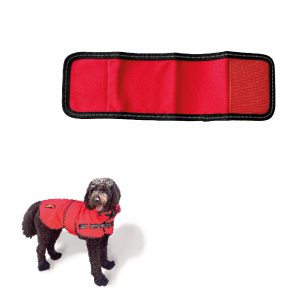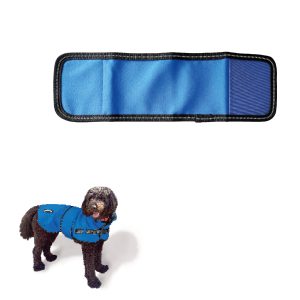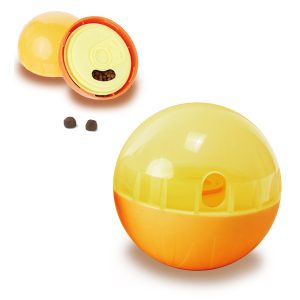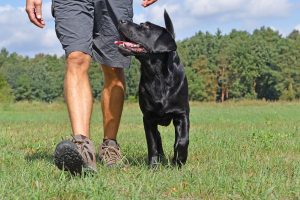There are many people who suffer from allergies and have to be very careful about what they eat and what they use. And yes, it’s true that dogs can also suffer from allergies. Their sensitivity can extend to a wide range of different things, just like ours.
Although certain breeds of dogs are more likely to suffer from allergies, all dogs are prone to them. Dogs can develop allergies at any stage of their lives. From flea allergies to food allergies and seasonal allergies, a dog can be allergic to many things.
The effects of allergies can differ from mild to severe, causing some dogs to suffer tremendously. If you suspect your dog has an allergy, you should take them straight to the vet to determine what treatment options are available. Some allergies can be controlled by simply keeping your dog away from the source of the allergy. Here’s a guide on how to help your dog with allergies.
The effects of allergies can differ from mild to severe, causing some dogs to suffer tremendously. If you suspect your dog has an allergy, you should take them straight to the vet to determine what treatment options are available. Some allergies can be controlled by simply keeping your dog away from the source of the allergy. Here’s a guide on how to help your dog with allergies.
Autumn Allergy Season For Dog
Allergic Dogs: Signs and Symptoms
Dogs who suffer from allergies display a variety of symptoms, making it difficult to determine what is causing the problem. An allergy can be picked up by your dog by ingesting something, inhaling allergens, or by coming into contact with something. Some of the symptoms of allergies include:
- Sneezing
- Ear Infections
- Chewing Feet Or Body
- Rubbing Face Or Eyes With Paws
- Licking excessively
- Skin irritations, rashes, and sores
- Skin with a reddish discolouration
- Wheezing
- Coughing
- Upset Tummy
It is important to note that most of these symptoms are caused by other health issues. Having one or some of these symptoms does not mean that your dog has an allergy. Your vet will need to determine what caused the symptoms.
Types of Allergy
When your dog starts to scratch a lot, it could be a sign of a skin allergy. Nevertheless, dogs can scratch as a sign of stress or anxiety as well. It is a very common veterinary complaint about dog owners taking their dogs to the veterinarian due to scratching.
You should pay attention to your dog’s skin and watch out for rashes, sores, and inflammations. Dogs have sensitive skin and may scratch excessively. Itchy skin can also be caused by flea allergies, which many dogs suffer from. Dogs that are allergic to fleas become allergic to their saliva instead of their bite.
The saliva irritates their skin, and it only takes one or two flea bites to cause severe allergic reactions. To prevent your dog from getting fleas in the first place, you should treat them regularly against fleas if they are allergic to fleas. There is also the possibility of food allergies in dogs. It can be particularly challenging to determine the cause of food allergies.
In order to figure out what type of food your dog cannot tolerate, you need to monitor what your dog is eating and the ingredients in the food. In addition to stomach and digestive problems (vomiting and diarrhoea), dogs with food allergies often have breathing problems and even irritated skin.
As your dog gets older, it might develop an allergy to something it did not have as a young dog. There are no age limits for food allergies in dogs. When you suspect that your dog has an allergy to certain types of food, talk to your veterinarian about alternative diets and how to identify food allergies.
10 Best Tips for Travelling with Dogs

10 Best Tips for Travelling with Dogs

A dog can also suffer from seasonal allergies such as hay fever or allergic reactions to environmental factors. Some plants, pollen, fabrics, and chemicals used around the house can cause allergies in dogs. In some cases, they might develop problems at certain times of the year. For example, if they suffer from hay fever, their allergies will be worse in the spring and summer.
The symptoms of these allergies include itchiness and irritation. You may see your dog scratching and chew at his skin in certain spots or all over his body. Additionally, they may experience respiratory problems resulting in sneezing, coughing, runny noses, and watery eyes.
Skin allergies in dogs: causes and symptoms
Some people may be surprised to learn that dogs can also have allergic reactions to a wide variety of things. Dermatitis is a chronic skin condition caused by allergic reactions, characterized by raised redness, swelling, and sensitivity. Diagnosing the source of the allergic reaction can be difficult. Dermatitis in dogs is divided into three types: atopic dermatitis, flea allergy dermatitis, and food allergy dermatitis.
1. Atopic Dermatitis
Atopic dermatitis is a reaction to an allergen present in the environment. Airborne pollen can cause seasonal allergies, while mould spores and house mites can cause year-round allergies. The hereditary nature of allergies makes retriever, Beagle, Boxer, Bulldog, Dalmatian, Shar-Pei and Irish Setter breeds more likely to suffer from allergies. However, allergies can strike any breed of dog.
Atopic Dermatitis is commonly seen in young pups less than three years of age and can worsen if not treated quickly. Hair loss, rubbing on the carpet, excessive scratching, and chewing of the paws, groin and armpits are all common symptoms.
It is recommended to get an intradermal skin test done by your vet to determine the allergen/s. Then, it’s as simple as removing the allergen from the dog’s environment and taking other easy actions to minimise contact with the allergen.
Dogs And Hay Fever
Just like humans, dogs can suffer from hay fever! Dogs will usually show symptoms before the age of three, but it can occur at any age. There are estimates that as many as 10% of all UK dogs suffer from this condition to some degree, and their owners may not realize it.
A dog’s hay fever is not limited to those that live in the country. Pooches who live in urban areas with no open space may also suffer from it. Allergic reactions are triggered by a variety of allergens, but pollen is the main culprit. In addition to dander, dust, grass, and other plant matter, dogs may also react badly. Usually associated with spring and summer, dogs can also develop hay fever in early autumn. How can you tell if your dog has hay fever by looking for its symptoms?
Is your dog suffering from Hay Fever?
This condition manifests as follows:
- Frequent, Repeated Sneezing
- Having a runny nose
- Red, itchy, and runny eyes
- Irritation all over the body
- Rash On The Face Or Paws
- Scratching the skin excessively
- Scratching leads to hair loss or sores
As hay fever could only present itself as a skin condition in dogs, you can rule it out as a possibility due to the absence of sneezing and the other symptoms we would normally associate with the condition. Consult your veterinarian for diagnosis if you are in any doubt.
How to treat dogs with antihistamines for hay fever
The symptoms of allergies may be alleviated by antihistamines prescribed by your veterinarian, but there are a few things you can do to make your pet more comfortable. When they come home after going for a walk, brush off their coats to reduce the amount of pollen they bring in.
If their fur is long, cut it short to reduce the number of allergens they could get caught in. When pollen counts are high, keep the house dusted and windows closed. Be sure to bathe your pooch regularly and keep their bedding clean.
What dogs are susceptible to Hay Fever?
Hay fever can affect any breed of dog, but some dogs are more prone to the condition than others. These dog breeds are the most likely to be affected by hay fever:
- The Cairn Terrier
- The Boston Terrier
- The Irish Setter
- The Dalmatian
- All Sizes Of Poodles
- All Sizes Of Schnauzers
- The Wire-Haired Terrier
- The West Highland Terrier
If your dog sneezes, has a runny nose, appears itchy, or appears to be sneezing, they may have hay fever. Make sure you consult your vet as soon as possible.
2. Flea Allergy Dermatitis
In cases of flea allergy dermatitis, the skin reacts to flea saliva and may become quite inflamed. There is a tendency for dogs to excessively scratch where they have been bitten, which can lead to hair loss and infected wounds. It is easier to get rid of fleas than other types of allergies since the reaction subsides when the fleas are eliminated. Using flea prevention products and thoroughly cleaning places where your dog spends a lot of time are the best ways to do this.
3. Food Allergy Dermatitis
Allergies in canines typically develop at an early age, like in humans. They can, however, also develop later in life. It is common for dogs to be allergic to proteins like beef, dairy, chicken, and eggs. However, allergies can develop to these foods even if your dog has been eating them for years.
There are several symptoms of the disorder, including excessive scratching of the ears, feet, face, and anus, as well as vomiting and increased bowel movements. You will need to follow a food elimination diet from your veterinarian for eight to twelve weeks in order to discover the allergen.
You should consult your local veterinarian to determine if your dog has a skin allergy, as they can recommend the best course of action.
Allergy-Relieving Products for Dogs
If your dog has allergies, you might consider these products:
- Designed especially for itchy dogs, such as Yumega Plus reduces itchiness and scabbing while supporting sensitive skin.
- Using ear drops helps to eliminate ear mites, soothe irritation, soften ear wax, and aid in healing.
- Aloe Vera Gel is great for dogs with sensitive skin or who are irritated. The gel soothes irritated skin and calms inflammation.
- Likewise, Tea Tree Oil is very good for the skin, as it is similar to Aloe Vera. Aloe Vera is also a component of this solution and it soothes, calms, and acts as an antiseptic.
- An antibacterial powder that aids in healing, useful for abrasions and minor wounds.
- The Cone Collar Provides Comfort For Your Dog And Helps To Prevent Him From Touching His Wounds And Skin Issues.
- A digestive supplement for cats and dogs that aids digestion and settles windy stomachs.
If your dog suffers from allergies, some of the above products may be helpful to you, but make sure to consult your vet before using them.
Dog allergy treatment
You can discuss treatment options with your vet if your dog suffers from allergies. Your veterinarian might recommend some approaches you can try to reduce your dog’s allergy symptoms. Unlike some allergies that can be treated easily with medication, some allergies require preventative measures. The key is to figure out exactly what is causing the allergy so you can develop a treatment plan.
What To Do If your Dog Has Allergies?
Whether it is hay fever or something that plagues our homes, our precious fur angels can also suffer from allergies.
But don’t fear, we can protect our beloved and before you know it, Fido and you will be frolicking in the fields under the summer sun.
1. Be Aware Of the Symptoms
Allergies can cause a wide range of symptoms, depending on the cause, and like many illnesses, our pets’ symptoms are uniquely personal to them as well.
Itching is a common symptom. Is your dog chewing on his nails or skin? Does he scoot across your clean floors with that cute bum? Are his tiny paws transforming into turbocharged scratchers? Have them checked out! In addition to sore areas (known as hot spots), changes in bowel movements, vomiting, changes in behaviour and more, other symptoms may also appear. Complications can result in seizures and organ failure – therefore, don’t let it fester.
2. Do not put off visiting the vet
We all tend to carry on with our lives, waiting and seeing if little Fido’s symptoms will slowly heal on their own. However, it is important that you remember that little Fido will not tell you how much pain he is in or where it hurts – talk to a veterinarian before treating your beloved pup at home.
3. Identify the cause of the allergy
The magic word may make Fido jump for joy, but he’s not immune to the elements such as grass, weeds, wood, pollen, and even things inside your home, such as dust, mould or cleaning tools! Besides the food Fido eats and the monthly de-flea treatment that Fido goes to great lengths to avoid, there can be other causes.
4. Getting the Right Treatment
In addition to steroid injections, vaccines, antihistamines and even special bath products, your veterinarian will probably prescribe one or more of these to help soothe Fido’s itch. These usually work quickly, and you’ll see Fido back to his mischievous self in no time, but if no solution works, you should go back to your veterinarian. Their only goal is to make your pet happy.
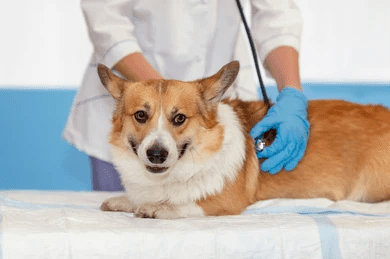
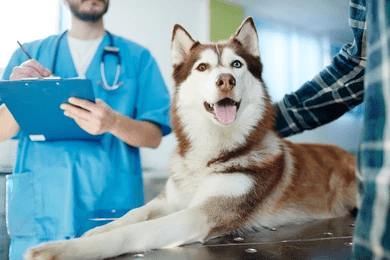
If you want to prevent future allergic reactions or soothe the current one, you can keep a variety of items in your home that will benefit little Fido.
The easiest environmental treatment is the maintenance of your home and purchasing a dehumidifier for dampness. You should also leave your windows open for at least 10 minutes every day. Mould should be removed the right way and cleaning chemicals used around the house should be avoided.
Don’t forget to keep on top of Fido’s health, especially when it comes to the outdoor elements.
The best way to treat food allergies is to change the diet and figure out what the cause is. To do this, you may need to consult a veterinarian. It has a range of foods for Fido’s needs, including special foods for dogs with sensitive stomachs.

